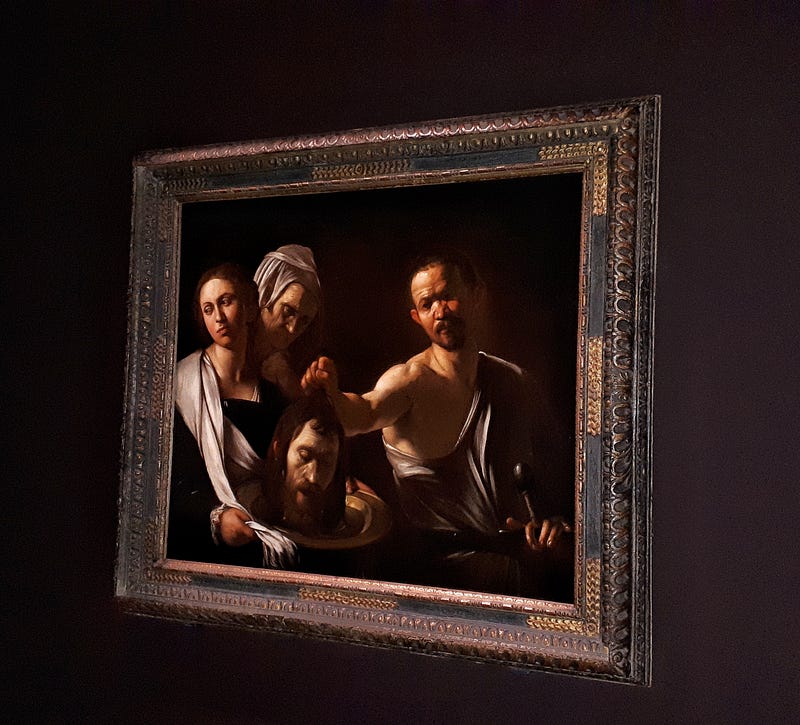Caravaggio's Last Masterpiece: Drama in Light and Shadow
Written on
Chapter 1: The Life of Caravaggio
Michelangelo Merisi da Caravaggio, born in Milan in late 1571, is often seen as the archetypal rebellious artist, a visionary to whom conventional norms do not apply. As Teju Cole aptly puts it, he embodies the essence of an uncontrollable genius. His final work, The Martyrdom of Saint Ursula, encapsulates both the artist's turbulent life and his artistic brilliance. The painting captures Ursula’s dramatic last moments, portrayed with a piercing arrow through her heart and surrounded by horrified onlookers. In this piece, Caravaggio allows a final glimpse of himself, as his own visage is reflected in Ursula’s image. The vivid reds, pallid faces, and stark shadows are quintessentially Caravaggio, illustrating his duality as both a brilliant artist and a man who lived in anguish.
Caravaggio's life took a drastic turn in 1606 when a tennis bet gone wrong led to a fatal altercation with Ranuccio Tomassoni. In a fit of violence, Caravaggio fatally stabbed Tomassoni, forcing him into a life on the run as a fugitive.
The National Gallery’s current exhibition, The Last Caravaggio, running until July 21, offers an insightful perspective on this controversial painter. The Martyrdom of Saint Ursula, which is believed to be his final painting, serves as both an introduction and a closing chapter in this exploration.
Chapter 2: The Tale of Saint Ursula
Ursula, a princess from Britain and an early Christian martyr, embarked on a mission to convert a pagan prince, bringing along 11,000 virgins. This captivating narrative is derived from a medieval text known as The Golden Legend, which Caravaggio is thought to have studied extensively to inform his work.
In this tale, Ursula's companions are brutally murdered by the Huns, who she seeks to convert. However, Ursula is spared when the Hunnish chief proposes marriage. Upon her refusal, he shoots an arrow at her from close range. Caravaggio's portrayal is filled with fury and violence, yet it also conveys a sense of calm acceptance from Ursula. One wonders if Caravaggio was drawn to the chief’s rage or if he admired Ursula’s composed heroism.
Next to Ursula, we find Salome receiving the head of John the Baptist. This was one of the first Caravaggio paintings I encountered during my teenage years, leaving a lasting impression. The gruesomeness of the scene, with Salome turning away from the severed head on a platter, continues to captivate me, embodying the dramatic essence that defined Caravaggio's life.

Chapter 3: The Legacy of Caravaggio
The drama portrayed in Caravaggio's works mirrors the tumult of his own life, solidifying his reputation as the quintessential uncontrollable artist.
In the video titled "How does Caravaggio capture violence and faith? Amy Key and Naomi Kimpenu's Artists on Artists," the intricate relationship between Caravaggio's art and his tumultuous life is explored, shedding light on the themes of violence and faith that permeate his work.
Another insightful video, "How did 'The Last Caravaggio' (and one other painting) become London's HOTTEST art show of 2024?" discusses the impact of Caravaggio's final painting in the contemporary art scene.
You can support my work by buying me a coffee here. For more of my stories on The Daily Cuppa Grande, explore the links below.